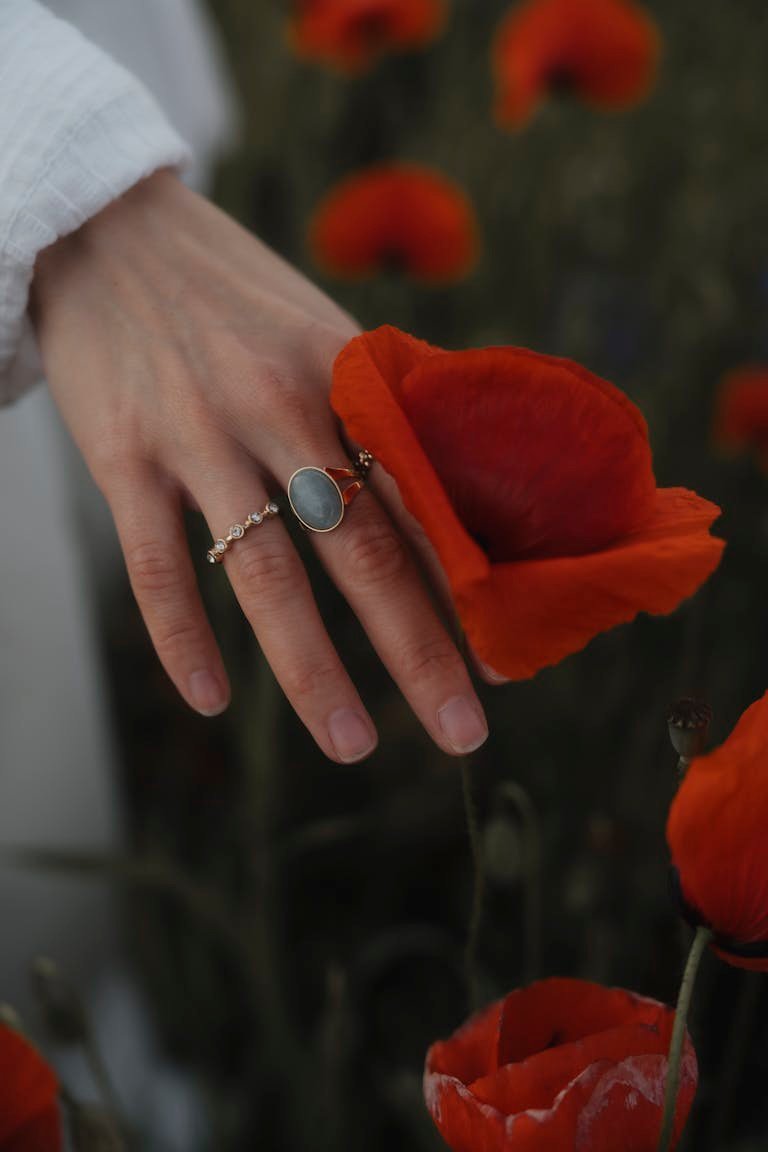Building a Sustainable Wardrobe: A Beginner’s Guide

Did you know up to 100 billion garments are produced by the fashion industry every year?
And each year, as much as 92 million tons of clothing end up in landfills. Only 20% of textiles are collected for reuse or recycling globally.
Thanks to things like fast fashion, limited recycling options and donation overflows.
If you would like to build a more sustainable wardrobe, that not only looks good but feels good this is the guide for you.
Obviously, it’s impossible to be completely sustainable because that would mean not making any more purchases at all.
The answer isn’t just to buy from sustainable brands either because they tend to be more pricey which is a struggle for many people.
In this guide, I’ll break down things you can actually do to create a more eco-friendly wardrobe, step by step.
Understanding Sustainable Fashion Basics
First, lets understand what the difference is between sustainable and fast fashion:
Sustainable fashion: Clothing and accessories are produced in a way that lowers the negative impact on the environment that the fashion industry causes.
This includes things like:
- Using organic, recycled, or biodegradable materials.
- Incorporating design techniques that reduce fabric waste, and make clothes more durable or recyclable.
- Minimising water, energy & chemical use during production
- Ensuring ethical production by giving fair wages, safe work conditions and worker rights.
Fast fashion: Clothes and accessories are produced in large quantities at rapid paces to sell trendy, cheap fashion items at relatively low prices, made from low-quality fabrics, that are not made to last. Leading to a cycle of people disposing of their clothes often and buying more.
This is achieved by:
- Using cheap materials like polyester.
- Minimising labour expenses.
How does this impact the environment?

Fashion contributes to environmental harm through excessive textile waste, water pollution from chemicals and dyeing processes, and overconsumption of natural resources like water, land, and energy.
The industry has a high carbon footprint due to the use of petroleum-based materials like polyester and synthetic fibres which shed microplastics leading to ecosystems and wildlife harm.
Unfortunately, many clothes are hard to recycle, due to them being made from mixed material blends (like cotton-polyester) or treated with chemicals and dyes. This prevents these materials from being easily broken down or reused.
How To Build A Sustainable Wardrobe & Shop For Sustainable Fashion
If you want to minimise your part without having to compromise on looking your best, here are some steps to can take to build a sustainable wardrobe and shop for sustainable fashion:
1. Assess Your Current Wardrobe
Assess your current wardrobe, identify your personal style and essential pieces – ensures it aligns with this, so you can make more sustainable choices.
Start by paying attention to essentials you reach for regularly and your favourite outfits. Track how often you wear each item. Identify each items materials, durability and wash requirements.
Natural fibres like cotton and linen have different impacts compared to synthetics, which may shed microplastics.
Note common styles, cuts, colours, patterns and silhouettes that suit you the best, make you feel confident and comfortable.
2. Decide What to Keep, Donate, Resell or Recycle

- Keep: Keep pieces that align with your personal style, suit your body shape, and pieces you genuinely like or wear often.
- Donate or Resell: Pick out clothes you don’t wear often, don’t like, or feel doesn’t suit you but are still in good condition. Charities, second-hand shops and online marketplaces like eBay, Vinted and Depop are all ways to extend their life.. and you can make some extra cash while you’re at it if you resell on online marketplaces.
- Recycle: For items that are too worn or damaged to donate, consider textile recycling programs to ensure they don’t end up in landfills.
3. Learn about Eco-Friendly vs Non Eco-Friendly Materials
When shopping for new clothes, it’s important to be aware of sustainable and non-sustainable materials so you can be more mindful when shopping.
Some eco-friendly material options are:
- Organic or Recycled Cotton (from cotton plant)
- Hemp (from hemp plant)
- Linen (from flax plant)
- Tencel (Lyocell) (from wood pulp)
These materials are all biodegradable, made from plants, use less water and chemicals to produce.
Some other great options are:
- Econly (made from recycled plastic waste and fishing nets)
- Recycled Polyester (Rpet) (made from recycled plastic)
Some non-eco-friendly material options are:
- Polyester (from petroleum)
- Acrylic (from polypropylene plastic)
- Nylon (from crude oil)
These materials take hundreds of years to decompose, release toxic chemicals and shed microplastics which pollute water sources, affecting marine life.
What about Animals Fabrics? Although biodegradable, materials like leather, suede, wool and silk are not ethical due to the harm and exploitation of animals involved in producing these materials.
4. Find Sustainable Brands Online
Although sustainable brands tend to be more expensive, they often are better quality and last longer. Buying fewer, higher-quality items can save money over time. They also have regular seasonal sales.
Look for brands that publish details on their supply chain, materials, labour practices, and environmental impact. Brands with transparent reporting are often more committed to ethical practices. Terms like “eco-friendly,” “green,” or “sustainable” should be backed by specific practices or certifications, like:
- Global Organic Textile Standard (GOTS),
- OEKO-TEX Standard 100 – Tests fabrics for harmful substances, ensuring they are safe for human use.
- Fair Trade Certified – Ensures fair wages and safe working conditions, and environmental standards for certain products.
- Bluesign – Focuses on sustainable manufacturing, reducing resource use and eliminating harmful chemicals in textile production.
- Use Online Databases: Websites like Good On You and Eco-Stylist rate brands on sustainability and ethical practices, making it easier to find brands with strong values.
5. Buy Second-Hand
If sustainable fashion brands are out of your budget, consider shopping second-hand from online marketplaces like Depop, eBay, or Vinted, or visit charity shops and thrift stores for affordable options. These places often have high-quality items from reputable brands at a fraction of the cost.
6. Buy Fast Fashion Mindfully
Alternatively, if you choose to shop from fast fashion brands, look for their “eco” or sustainable collections. Focus on pieces made from eco-friendly materials like organic cotton or recycled polyester, and prioritise items that you know you’ll wear often and that are well-made to last. Its all about buying intentionally.
7. Ask Yourself Questions Before Making A Purchase
To stop impulse buying, taking a moment to ask yourself some question can bring clarity as to whether you need this item or if this will be another wasted purchase. Questions like:
- Is it necessary? Do you really need this or are you buying for the sake of it? Do you already have something similar to this?
- How often will I wear it? Will you wear this weekly, monthly, or yearly? Will you wear this for years to come?
- Does this suit my body shape? If you know your body shape or what suits your shape, does this align with that?
- Does this colour suit you? If you’re familiar with your seasonal colour palette, consider whether those shades complement your natural colouring that will suit you. This stops you from buying colours that don’t complement completion.
- Is it practical and comfortable? When purchasing items like shoes or skirts, ask yourself: will these shoes be uncomfortable to walk in? Does this pencil skirt feel too tight to walk comfortably in? Prioritising practicality will ensure both comfort and style.
- Is it good quality? How does it feel? Is it lined? Is it sheer? What is the material made from? If you stretch the fabric does it return to its natural shape or lose its shape? How is the seam strength?
8. Create A Capsule Wardrobe

A capsule wardrobe is the answer to that common phrase ‘ I don’t have anything to wear’, as we stare at a wardrobe full of clothes.
Its is a curated collection of versatile, timeless clothing pieces that can be easily mixed and matched to create a wide range of outfits.
Typically, a capsule wardrobe includes high-quality essentials, neutral colours and few accessories, focusing on quality over quantity.
The goal is to simplify dressing, reduce clutter, and promote a more sustainable, intentional approach to fashion by having only the pieces you love and actually wear regularly.
How do you build a sustainable capsule wardrobe?
- Buy Essential Basics: Start with timeless basics that never go out of style: like turtle neck tops, trench coats and jeans.
- Buy Neutral Colours: Discover your seasonal colour palette and invest in neutral shades that complement it. Colours like black, brown, white, and cream effortlessly pair together, allowing you to mix and match for a versatile wardrobe with endless outfit combinations.
- Have Multi-Purpose Items: Choose essential items in each clothing category (like tops, trousers, and jackets) that match your style and can work across different outfits and occasions. For instance, a black blazer can be versatile for both office wear and evening outfits.
- Opt for Timeless Accessories: Invest in classic pieces, like a belt, high quality simple jewellery and bags or a neutral scarf, that can work across outfits and seasons.
9. Maintaining Your Wardrobe
Learning simple repair and care techniques can extend the life of your garments.
When washing clothes:
- Read Care Labels: Read your clothing care labels to see what temperature to wash at, whether your clothes need to be machine washed, hand washed or dry cleaned. These will be different depending on the fabric type. Following these instructions will help maintain the quality of fabrics.
- Turn Clothes Inside Out: Turning clothes inside out helps minimise contact with the drum, reducing wear and tear on the fabric. It also prevents zippers, buttons catching on fabrics and causing holes.
- Avoid Overloading The Machine: Overloading the washing machine causes clothes to rub against each other and the drum, increasing the chances of damage.
- Use A Mild Detergent: Harsh detergents can weaken fabrics over time. Choose a gentle, fabric-friendly detergent to keep clothes in better condition.
- Use Correct Water Temperature: Avoid using hot water for delicate fabrics, as it can cause them to weaken and tear more easily. Washing clothes with cold or lukewarm temperatures isgentler on fabrics, helping to maintain the colour and structure.
- Air Dry: I recommend only air drying washed clothes rather than using a dryer as this can shrink and weaken fabric fibres.
Repair Imperfections: If your clothes have minor tears, loose seams, missing buttons, or broken zippers, learning basic sewing can fix simple problems extending the life of your garments. Alternatively, investing in a sewing machine can provide quicker, professional-quality fixes, making your items feel like new again.
Invest In A Lint Remover: When you get annoying, cheap-looking fuzz balls or pilling, use a lint remover to quickly remove them and restore your garments to like-new condition.
Conclusion
It’s not about being perfect, we still want to look good, treat ourselves to new stuff and shop for items at our convenience. If you can’t afford to buy from sustainable brands you don’t have to – it’s about being mindful, buying less and with intention. It’s a journey not a destination, start with small changes, this will take time and hopefully, there will be better solutions in the future.
Some people just don’t care, they don’t care how their actions affect the planet or the animals we share it with. But if you’re here and you’ve made it this far, I’m assuming you do care. And the planet and animals thank YOU for that.



